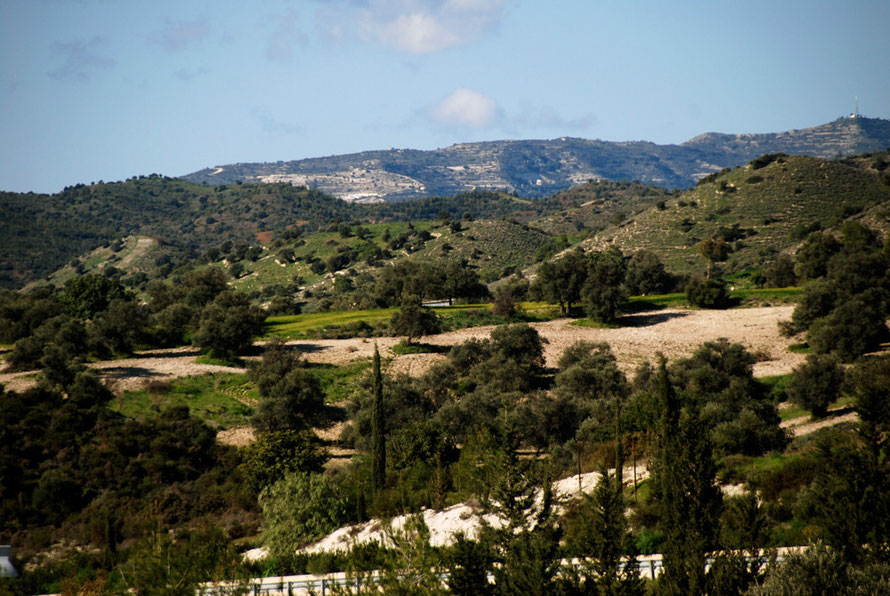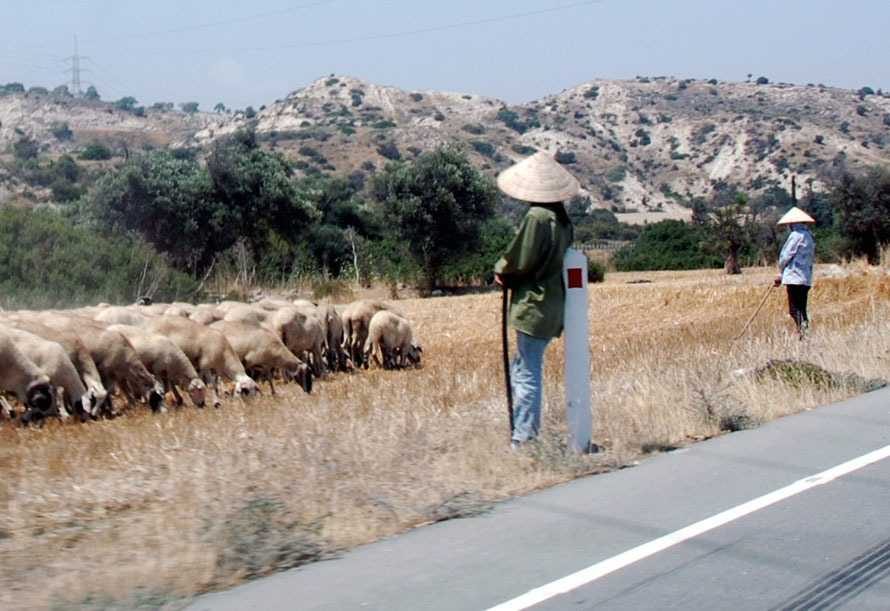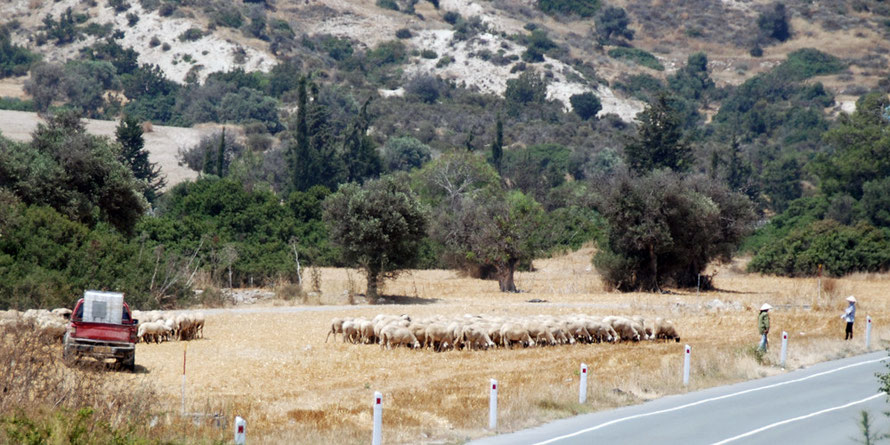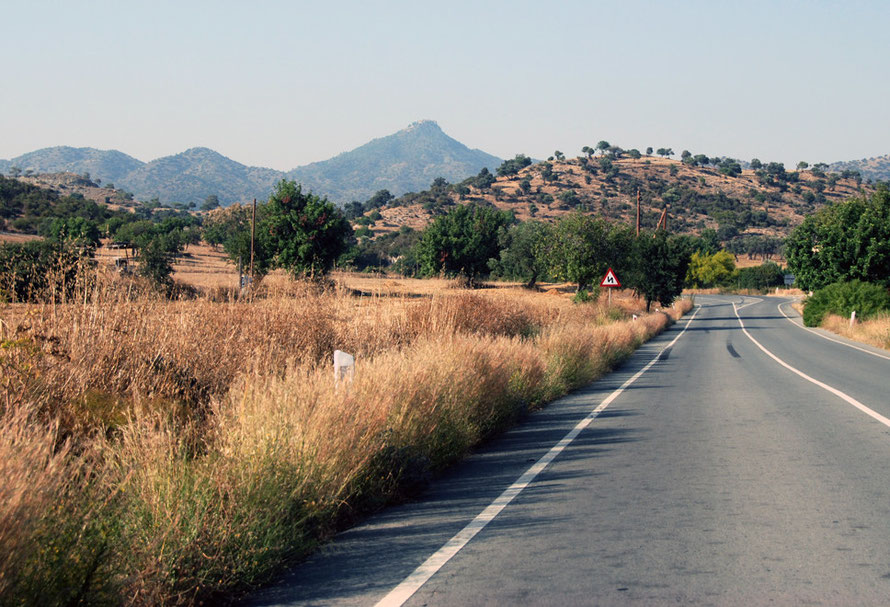Cyprus Interiors III: Wheat and Carob country near Kofinou
During my four brief visits to Cyprus I have driven along the A1 motorway between Nicosia and Limassol more times than I care to remember. It has often just a means to an end - either getting to, or back from, some wild journey beyond Paphos and up into the Tillarian hills.
But increasingly I have used the old pre-motorway road, particularly on the stretch between the Stavrovouni turn-off and Limassol. I really like the look of the country around here. It feels generous. The hills roll but don't rear. The country is open and without fences. One field seems to blend into the next, carob and olive trees scattered as if by chance in harmony.

I had pulled off the motorway on a brilliant morning (see the last part of Khirokitia) and relaxed into a less frenzied way of driving. I passed a big, black African guy hitching on the old main road. He held his thumb out imploringly and then shook his fist at me as I drove by. I didn't want to 'harshen my mellow' by picking up someone with somewhere to get to when I would be continuously stopping and starting. But it didn't feel right either. If not 'harshened' my mellow was was no longer as mellow as it had been.
Half a kilometre later I stopped in a farm driveway to take a few pictures. A big bird in a nearby carob tree cursed me and lumbered into the still air. It seemed heavier than the Common Buzzard (Buteo buteo). The other next likeliest was probably a Long-legged Buzzard (Buteo rufinus). As I was taking my pictures an old guy in a pick-up pulled up and looked at me quizzically. I gestured to my camera and we smiled. He watched me for a while and then hastened up the track to his farm.
Aware that the African guy would be catching up with me I too hastened away until the next photo opportunity presented itself. Which, naturally enough didn't take long. The day was so beautiful I was overcome with a kind of desperate yearning to capture and bottle it, to take it home to cold England, to take it back to my colleagues stuck in an office working all day.
The Cypriot driver careening down the old road was oblivious to my inner turmoil and scowled as I pulled into the verge to pursue my photographic whims.

The picture above possibly and if so completely by chance shows the masts at the Makarios Earth Satellite Station in the upper right. I had seen the signs for this before and the road that led back under the motorway through a tunnel that looked like it would only accommodate the smallest of cars.
For some reason I found this funny. So many streets, centres, and statues in the south of Cyprus commemorate Archbishop Makarios III, the Greek Orthodox leader and 'wily fox' of 'enosis' and the struggle for independence against the Brits that it seemed only natural that he should also have an Earth Satellite Station named after him.
But I couldn't help seeing it as an extra-terrestial relay station picking up the much-mourned leader's thoughts and interventions on the island's present crisis. However, it is unlikely he would have got his German and American cars (a Mercedes-Benz 600 and a Cadillac Fleetwood 75) through that access tunnel (for these see my page: Nicosia Art and Folk Museums).
The Cretan or Small-Tree Mallow is distinguished from the Tree Mallow (Lavatera arborea). Lavatera cretica is an annual or biennial herb growing to 1 or exceptionally 1½m and is also known as the 'Cornish Mallow' in the UK. This is because it only grows in Cornwall, this being the limit of its northward distribution. The Tree Mallow is common in the UK and grows to a greater height than the Small-Tree Mallow, as the name suggests.
The Small-Tree Mallow really does get everywhere in the cultivated soils of Cyprus and grows thick and chockingly in huge swathes when left unchecked. It has deep roots and is one of the last plants to be in flower in the scorching Cypriot summers (see these external The Lavatera Pages).
I wondered if the plant had any use, such as fodder, but only once saw it being collected, by hand by a farmer near Kato Koutrafas. Apparently the Tree Mallow was considered a nutritive source of fodder in 19th century Britain (see Golden Map).
















